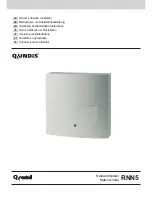
C H A P T E R
43-1
Catalyst 4500 Series Switch, Cisco IOS Software Configuration Guide - Cisco IOS XE 3.9.xE and IOS 15.2(5)Ex
43
Configuring VRF-lite
Virtual Private Networks (VPNs) provide a secure way for customers to share bandwidth over an ISP
backbone network. A VPN is a collection of sites sharing a common routing table. A customer site is
connected to the service provider network by one or more interfaces, and the service provider associates
each interface with a VPN routing table. A VPN routing table is called a VPN routing/forwarding (VRF)
table.
With the VRF-lite feature, the Catalyst 4500 series switch supports multiple VPN routing/forwarding
instances in customer edge devices. (VRF-lite is also termed multi-VRF CE, or multi-VRF Customer
Edge Device). VRF-lite allows a service provider to support two or more VPNs with overlapping IP
addresses using one interface.
This document addresses both IPv4 and IPv6 VRF-lite.
Note
Starting with Cisco IOS Release 12.2(52)SG, the Catalyst 4500 switch supports VRF-lite NSF support
with routing protocols OSPF/EIGRP/BGP.
This chapter includes these topics:
•
•
VRF-lite Configuration Guidelines, page 43-3
•
Configuring VRF-lite for IPv4, page 43-4
•
Configuring VRF-lite for IPv6, page 43-14
•
VPN Co-existence Between IPv4 and IPv6, page 43-27
•
Migrating from the Old to New CLI Scheme, page 43-27
Note
The switch does not use Multiprotocol Label Switching (MPLS) to support VPNs. For information about
MPLS VRF, refer to the
Cisco IOS Switching Services Configuration Guide
at:
For complete syntax and usage information for the switch commands used in this chapter, see the
Cisco IOS Command Reference Guides for the Catalyst 4500 Series Switch
If a command is not in the
Cisco Catalyst 4500 Series Switch Command Reference
, you can locate it in
the
Summary of Contents for Catalyst 4500 Series
Page 2: ......
Page 4: ......
Page 2086: ...Index IN 46 Software Configuration Guide Release IOS XE 3 9 0E and IOS 15 2 5 E ...
















































